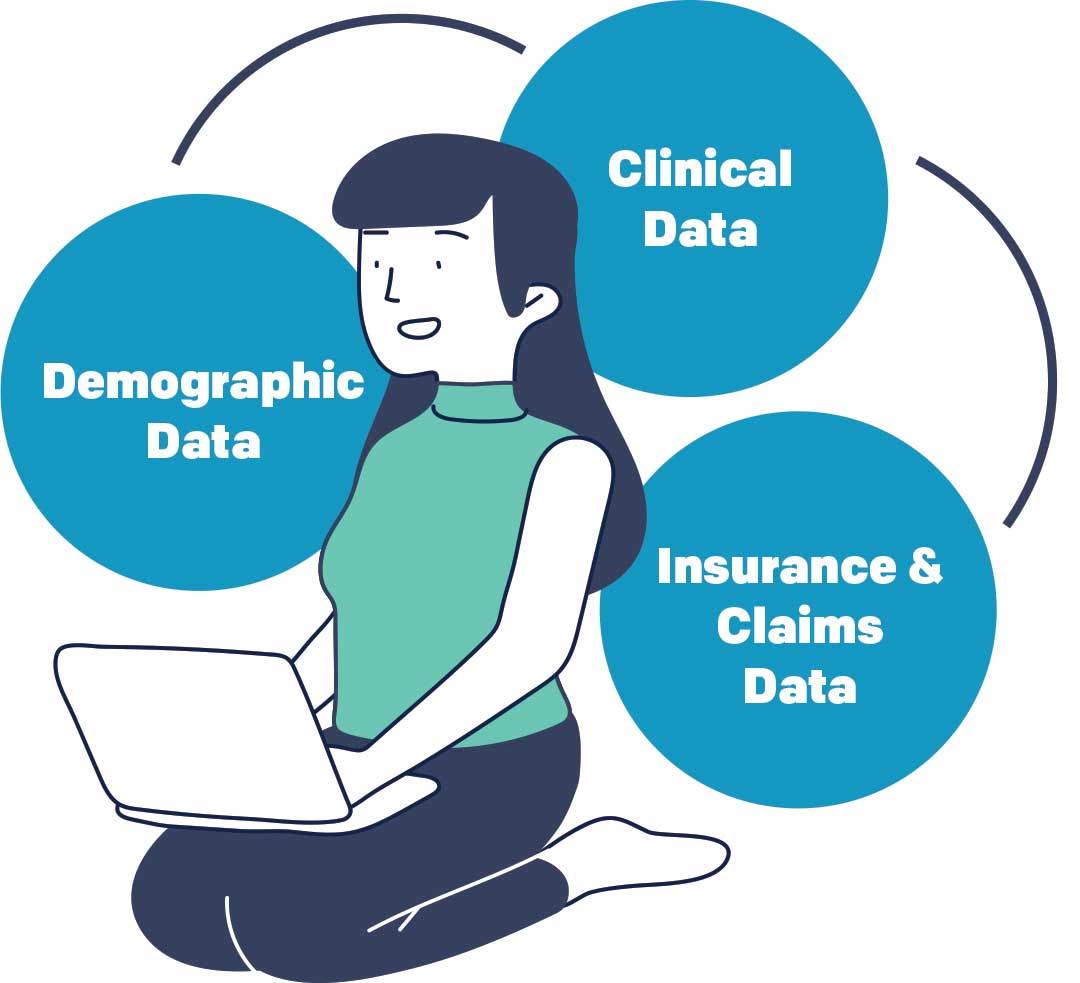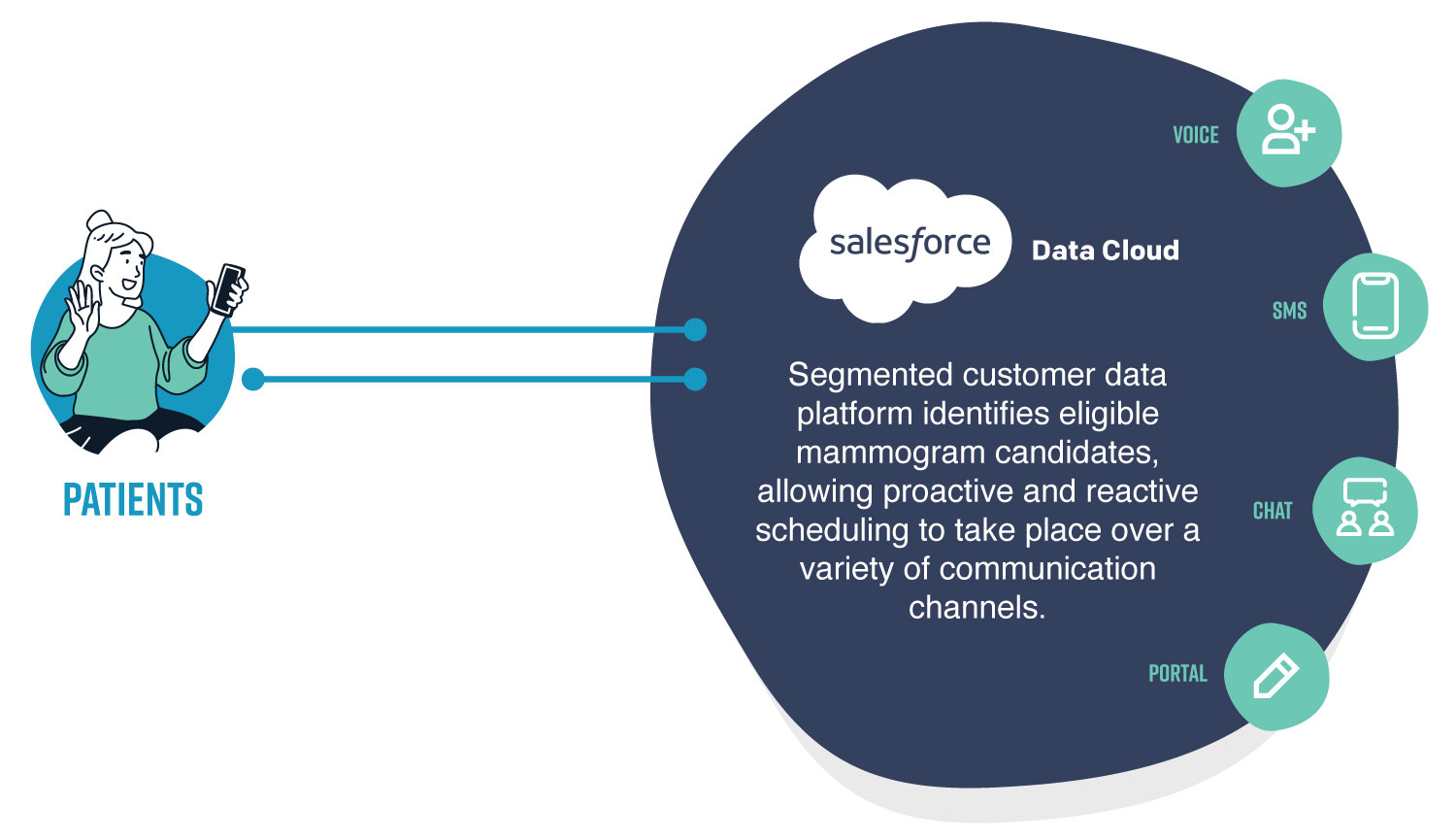Solving the Use Case
Overview
By identifying and understanding the unique needs of different groups, healthcare providers can develop personalized care plans and implement targeted interventions. This comprehensive approach not only increases the number of screenings but also ensures that individuals receive the personalized attention they deserve.
Ultimately, by combining a targeted approach with personalized care, providers can make significant strides in improving community health and promoting early detection of breast cancer.
However, this use case needs to be solved with technology.
Current Gaps
Gaps in mammogram screenings can occur when individuals neglect regular screenings or seek them from providers outside their network. Unfortunately, women with lower income or educational attainment are more prone to missing these crucial screenings.
Discrepancies in data arise due to the lack of integration between different systems, like electronic health records (EHRs), communication, and insurance platforms. This poses a challenge in creating comprehensive patient profiles that encompass the vital health, demographic, and insurance information required to determine mammogram eligibility.
Instead, numerous health systems depend on manual profiling and outreach – a strategy that cannot meet the demands of expanding patient populations.
Addressing the gaps and improving data integration is crucial to ensure that all individuals have access to timely and accurate mammogram screenings, promoting better healthcare outcomes for everyone.
Solution
To effectively address this use case, an ideal solution involves utilizing a platform for segmenting populations to pinpoint eligible women for screenings. Additionally, an engagement platform can be employed to personalize outreach efforts.
Customer Data Platforms, such as Salesforce Data Cloud, enable the consolidation of data from diverse sources. This integration allows healthcare providers to segment populations based on demographic, insurance, and clinical data. Rather than simply storing data, this platform aggregates information to provide a comprehensive view of each patient.
Here's an example of a unified profile:

By integrating with marketing automation platforms, this data platform enables providers to send personalized communications to specific segments. Moreover, as mammograms do not necessitate an order from a primary care physician, schedulers can proactively verify if women are due for a mammogram when they seek other healthcare services. This proactive approach ensures comprehensive care and timely screenings.

![]()



